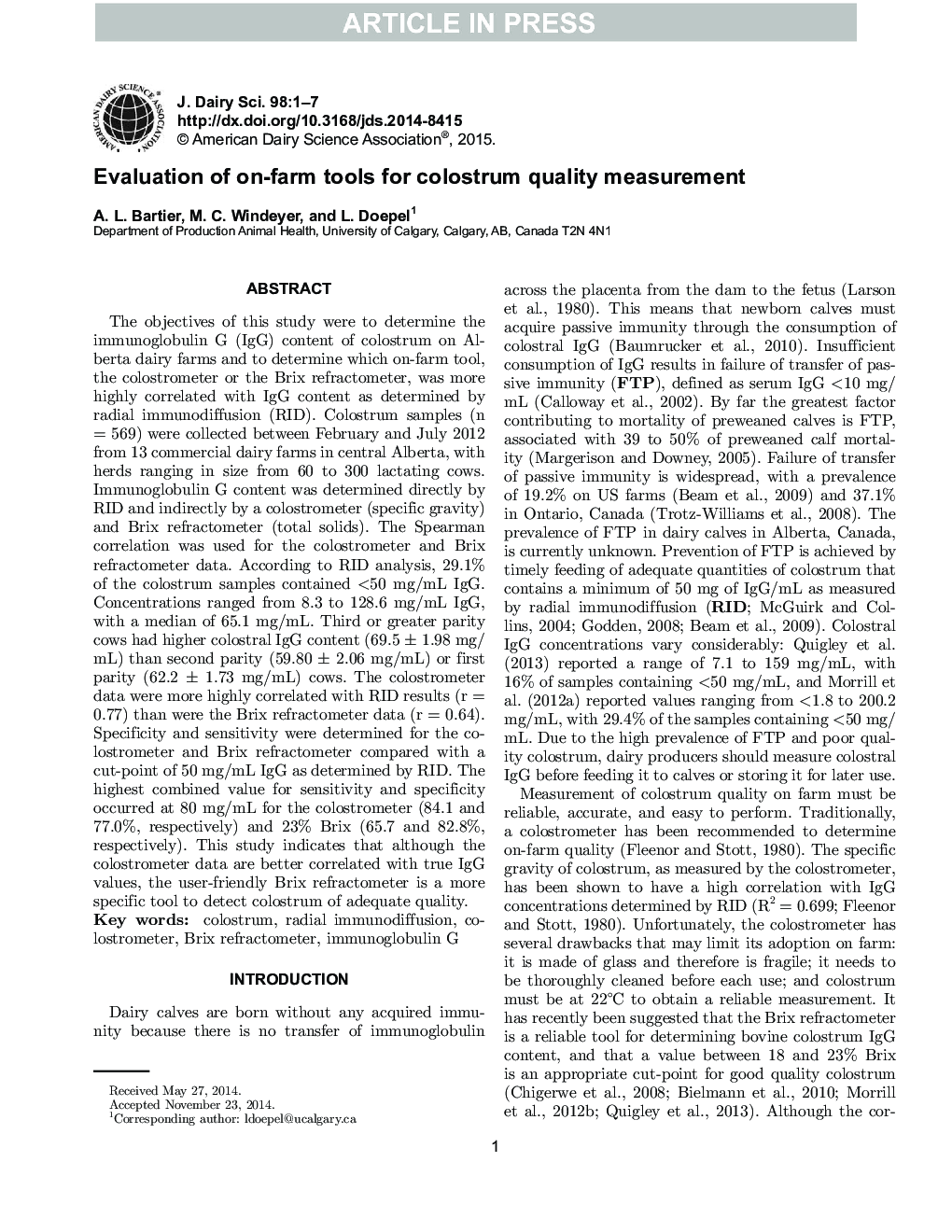| Article ID | Journal | Published Year | Pages | File Type |
|---|---|---|---|---|
| 10976472 | Journal of Dairy Science | 2015 | 7 Pages |
Abstract
The objectives of this study were to determine the immunoglobulin G (IgG) content of colostrum on Alberta dairy farms and to determine which on-farm tool, the colostrometer or the Brix refractometer, was more highly correlated with IgG content as determined by radial immunodiffusion (RID). Colostrum samples (n = 569) were collected between February and July 2012 from 13 commercial dairy farms in central Alberta, with herds ranging in size from 60 to 300 lactating cows. Immunoglobulin G content was determined directly by RID and indirectly by a colostrometer (specific gravity) and Brix refractometer (total solids). The Spearman correlation was used for the colostrometer and Brix refractometer data. According to RID analysis, 29.1% of the colostrum samples contained <50 mg/mL IgG. Concentrations ranged from 8.3 to 128.6 mg/mL IgG, with a median of 65.1 mg/mL. Third or greater parity cows had higher colostral IgG content (69.5 ± 1.98 mg/mL) than second parity (59.80 ± 2.06 mg/mL) or first parity (62.2 ± 1.73 mg/mL) cows. The colostrometer data were more highly correlated with RID results (r = 0.77) than were the Brix refractometer data (r = 0.64). Specificity and sensitivity were determined for the colostrometer and Brix refractometer compared with a cut-point of 50 mg/mL IgG as determined by RID. The highest combined value for sensitivity and specificity occurred at 80 mg/mL for the colostrometer (84.1 and 77.0%, respectively) and 23% Brix (65.7 and 82.8%, respectively). This study indicates that although the colostrometer data are better correlated with true IgG values, the user-friendly Brix refractometer is a more specific tool to detect colostrum of adequate quality.
Related Topics
Life Sciences
Agricultural and Biological Sciences
Animal Science and Zoology
Authors
A.L. Bartier, M.C. Windeyer, L. Doepel,
